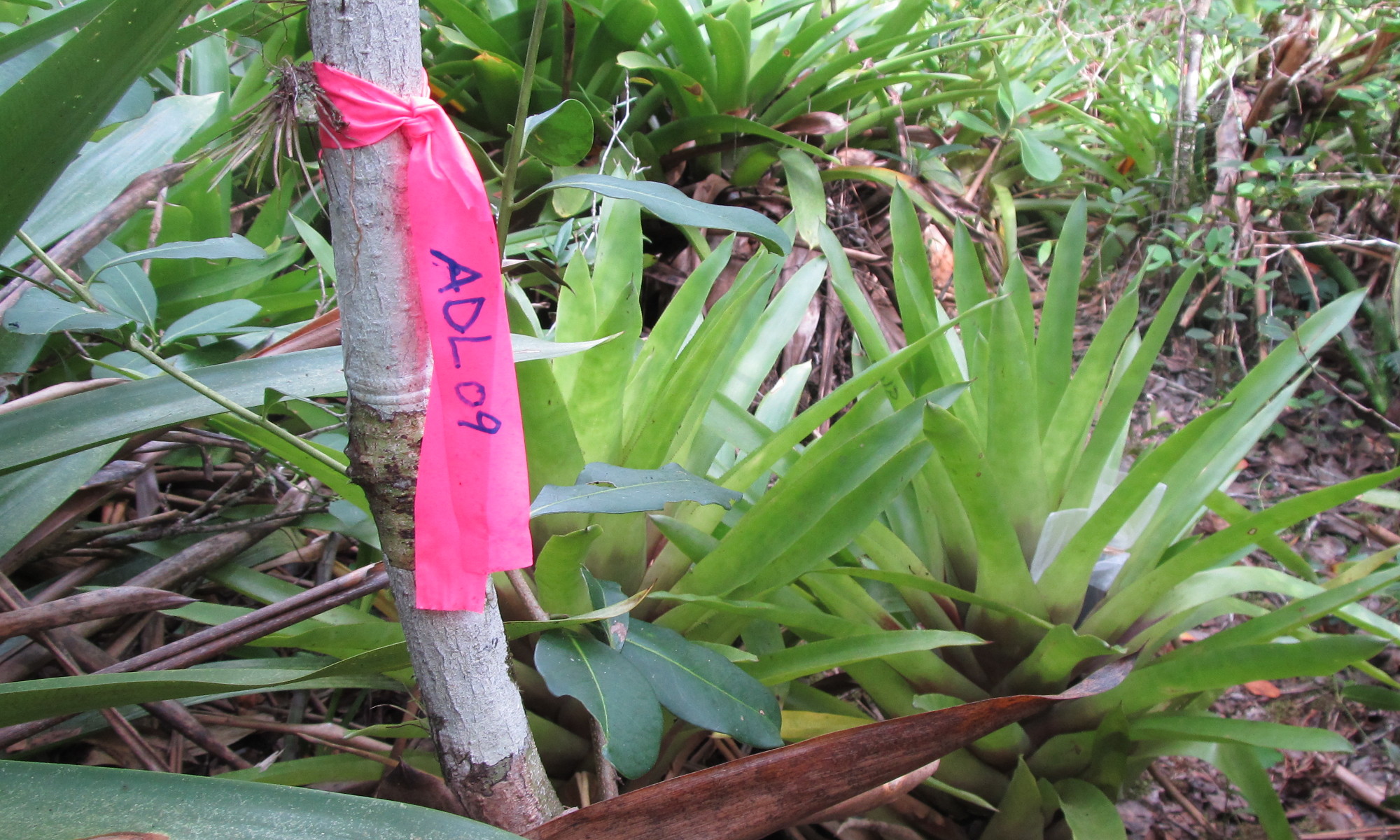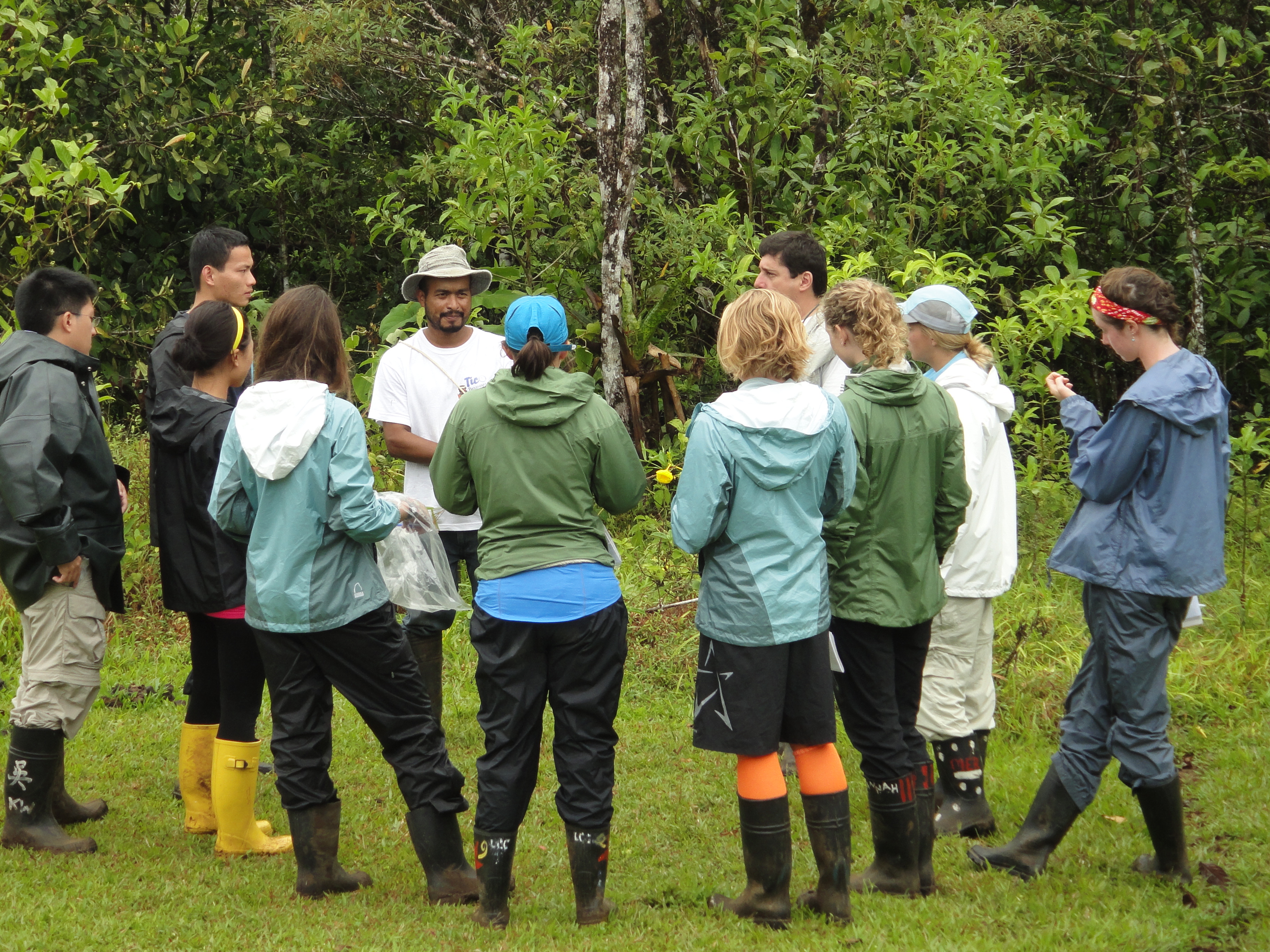I found this article about parataxonomists in Costa Rica and Papua New Guinea in Science today: Uncertain Future for Tropical Ecology
These people are locals but usually way better taxonomists than most of the foreign scientists who go there (e.g. me ;-)). They do amazing work, and could for example help Angie identify trees this field season. I also love the idea because it engages local communities and helps build relationships between conservation areas and the people who essentially live in or around them. Unfortunately, many of these programs are facing budget problems right now. So if you have a rich grandmother or cousin: get them to support parataxonomists!
This is a picture of Calixto Moraga, one of the parataxonomists working for Dan Janzen at Pitilla, doing a guided tour for US undergrads during our last field trip:

